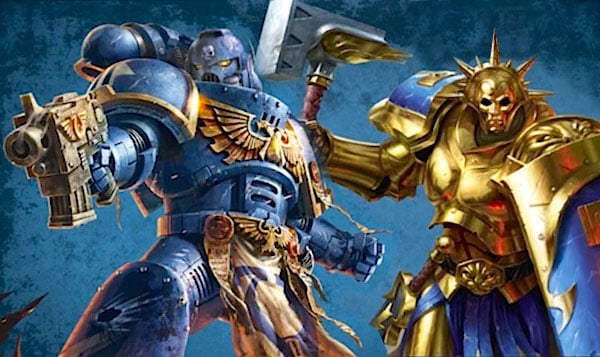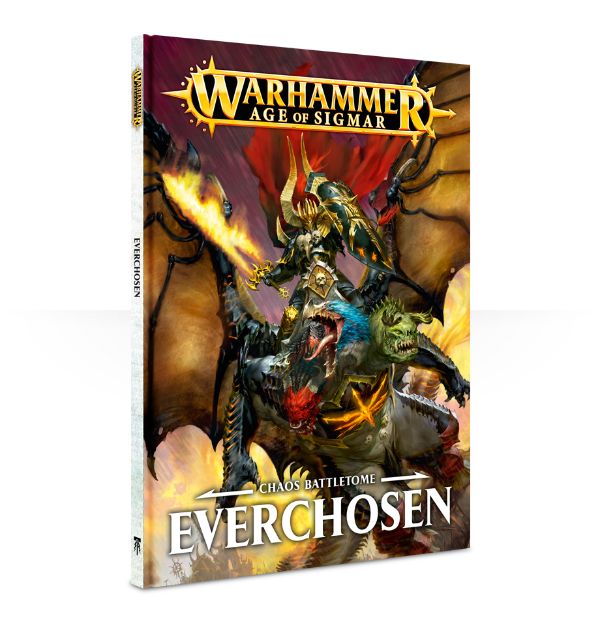Top 10 Differences: 40k VS. AoS


Come see the top 10 differences between 40k and AoS! The Glove are off, and it’s Grimdark vs. the 8 Realms.
Sigmar has returned with a new game, yes, it’s not Rank and Flanks, there are plenty of other options out there for Mr. and Mrs. Flanks & Ranks, but for those who are looking for some round base action this game is throwing down the hammer.
If you’re looking for a Fantasy version of Warhammer without the trays this game is for you. It is different than 40k and all of it’s complications and we’re going to go over the top 10 differences between these two games.
A quick AoS bootcamp of things you need to know!
- So, as we all know a 40k faction Codex, In AoS it’s called a Battletome. That’s a minor difference but certainly something to keep note of; further there’s no points in this, but there are formations and data sheets.
- Instead of an ally matrix, Sigmar has a book called “Grand Alliance” and wraps up multiple factions into an alliance like Order, Destruction, Chaos, and Death. Within each alliance are multiple factions and they all play together nicely. That being said, there’s nothing saying you can’t bring your Stormcasts and your Nurgles in one army but you lose out on certain benefits.
- The rulebook in 40k has both narrative and lot’s of rules it’s huge. In Age of Sigmar it’s just 4 pages of the core rules. There’s no fluff, there’s no special rules here, those are in your battle tomes and you’re data sheets. No, AoS isn’t just 4 pages, that’s silly. There’s thousands of other pages of rules which are kept on the datasheet, that’s handy because you don’t have to go through the big book of rules to figure out what stealth, shrouding, or Posion does; it’s all on the datasheets.
- The Generals Handbook: Basically a supplement’s worth of scenarios, rules, artifacts, and one more thing, I always forget; oh yeah, points! That’s a big deal.
Okay, now onto the list.
Top 10 Differences: 40k VS. AOS
- There’s only one save. No ward save, no invulnerable save. There’s only one save and it can be modified. You do get a “Feel No Pain” and sometimes you can re-roll it, but there’s only one save.
- Positioning is king in this game, all of your attacks are just attacks, if you have the range you can attack with all your attacks. Shooting attack? Are in you range? Are you in line of sight? You can attack. Melee Attack? Is your hammer in range? Are you in line of sight? You can attack.
- There’s 1 to hit roll and 1 to wound roll. No toughness. It makes things quick and tosses multiple tables of annoyance out.
- Mortal wounds, kind of the boogey man right now, because you don’t have to roll to hit OR wound, and you opponent doesn’t get a save, it just wounds. BOOM!
- Allocations, you can put the wounds where you want them regardless of Line of Sight. It sounds easy but it actually opens up lots of tactical nuances.
- Cover, you have to be completely in it, or on top of it; similar to 40k; but you can use it in combat too.
- You can run in the movement phase, you don’t have to wait until the shooting phase, you do lose your shooting phase but it allows you see how far they will go so you can make better choices; also, it speeds up the game.
- Back to Back player turns in possible each battle round (i.e what they call each game turn) if you win a roll off, this can have a huge impact on the game and makes you think twice; the tide of battle can swing every turn.
- Hand to Hand Combat, it’s a big deal. Once you’re stuck in, there’s no breaking from combat , everyone rolls a D6, add the number of models lost, subtract bravery, that total is how many models you lose. So, how do you get your soldiers out of harms way? In your movement phase, if you can get all your guys in a warscroll 3 inches away from the enemy you can retreat. This opens up some tactical options because you an send in guys in the back and protect battle worn units that you might need to save for later. As long as you don’t retreat you can shoot at the enemy; melee doesn’t matter. Got a bow and arrow? Are you in range? Use it in combat. However, if you perform an attack FIRST, you allow the enemy to pile in and have a go at you.
- Bases, they’re for looks. There is a big note that you can use the base. I personally feel that’s the best option, I don’t want my guys all over each other stacked on top of each other. Would you want someone’s unpainted models all barrel of monkeys on your bases?
Bonus difference: A war scroll cannot go inside a war scroll; which means no IC’s, your general is all by himself and you have to keep an eye on him; not hiding him in a unit. Of course, if you keep your men’s together they can keep your enemies out.
All in all, this is a tight ruleset and now that we have points it makes competitive play a lot easier to figure out. If you’re on the fence, I really suggest to give this game a try.








